Purple Prairie Clover
A clover for everything
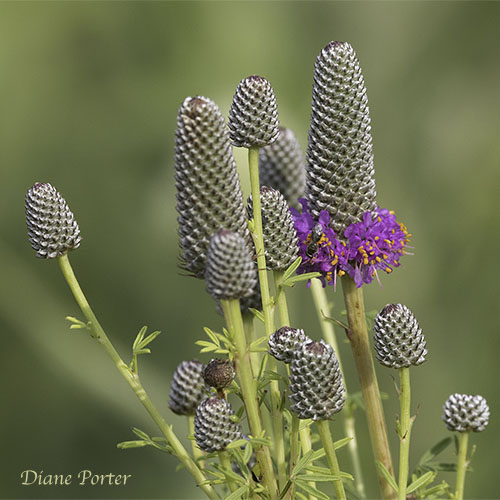
Ahh, Purple Prairie Clover is starting to bloom, bottom first. My friend Cheri Franke remarked that they reminded her of "little ballerina tutus."
This is a charming wildflower native to the tallgrass prairie. They don't need coddling in a garden. They grow wild, and they can do so in grimly dry soil. This is thanks in part to their deep taproot.
However, they are absolutely delicious to all kinds of mammals, especially deer. It seems pretty amazing that they have managed to reproduce, year after year, through the eons, and that they are still with us today.
In my prairie flower garden, which is not fenced or otherwise protected, the deer have gotten more of them than I'd like. However, a few have survived, and now there are several nice patches developing.
Their jobs
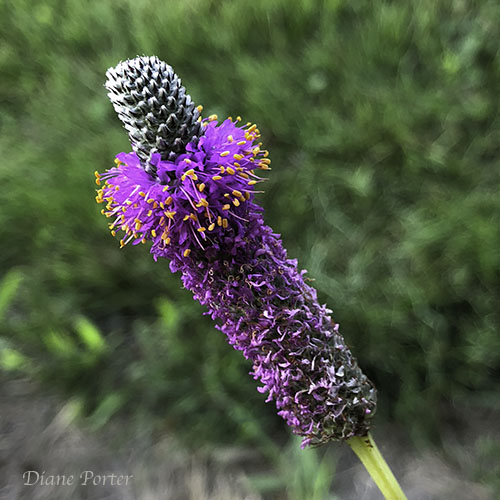
Purple Prairie Clover is a legume, like beans and peas. Just by living, it enriches the soil by adding nitrogen, thereby making the land more conducive to other flowers and grassses. It's also stupendously valuable to native bees and other beneficial insects.
How it blooms
Blooming starts at the bottom of the thimble-like flower spike, with a purple tutu as Cheri Franke described it. Over the weeks that a plant is in bloom, the tutu rides up the spike, providing nourishment to its cooperating insects for a long time.
After the flowers have passed, the seeds form. Purple Prairie Flower seems not very generous with its seeds. Often the head looks like it has seeds, but when I gather it I find that the seeds have not actually formed.
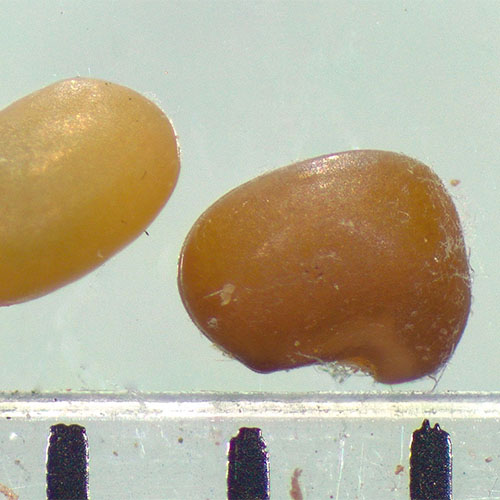
A new generation
I always make the effort to collect some of the clover's seeds, even though it's a bit tedious. I like to start new plants every year and protect them until they're big enough to hold their own in the open field.
The seeds look like miniature beans — which is just what they are. But very small beans, only a bit over one millimeter in length. They have a fairly hard shell. I separate them from the non-seed material and let them dry for a day or so before storing them for the winter.
Although Purple Prairie Clover can self seed, I get more new plants by raising them as I would any vegetable crop that needs special nurturing. And it's something I enjoy.
Starting from seed
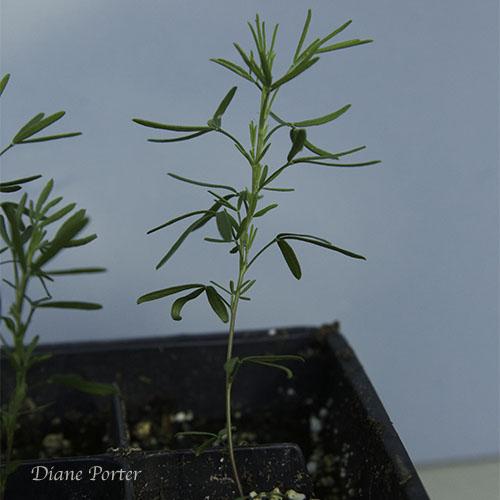
Most native plants of the prairie require a period of damp coldness for a month or two before they will sprout. But not Purple Prairie Clover. You can keep the dry seeds through the winter and plant them in the spring, when they will sprout quite easily.
I start them in 6-packs in an outdoor growing box. The box receives rain and sunlight just like anything else outdoors, but the contents are protected by 1/4-inch-mesh wire top that keeps out the chipmunks, deer, rabbits, and other varmits.
I keep all well watered, which is a level of care not available to the plants out in the open field. And every other week I provide fish fertilizer at half the recommended dose for houseplants. This keeps everything growing vigorously.
Usually I get my Purple Prairie Clover seedlings into the ground by late spring, but sometimes I don't get around to it in time, or the weather becomes murderously dry. Then I keep them all summer in the growing box and plant them out the following spring.
Where does Purple Prairie Clover grow?
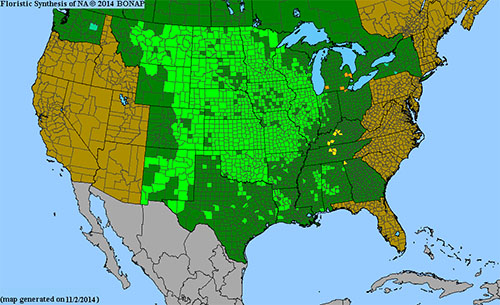
Purple Prairie Clover is a native wildflower of the North American prairie states. In Iowa it is not rare, but it's not found in every county.
The map shows in the light green color all the counties in which it is found growing wild.
The dark green color means that the species is found somewhere in the state.
This map was produced by The Biota of North America Program (BONAP).
Names of this clover
Common name:
Purple Prairie Clover
Scientific name:
Dalea purpurea
Family name:
Fabaceae, or Bean family
— Diane Porter, Fairfield, Iowa, July 4, 2022
See more of Diane's blogposts about native plants

